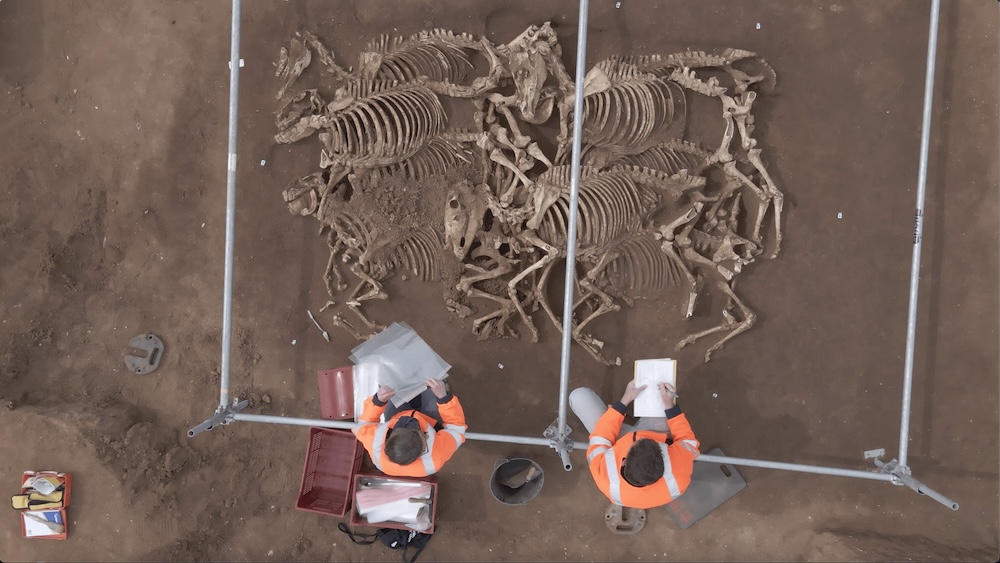28 'carefully placed' horses in ancient burial in France may have been part of a sacrificial ritual
Based on the positioning of the horses, researchers determined that the animals may have been buried as part of a sacrifice.

Archaeologists in France have discovered ancient pits containing the skeletal remains of more than two dozen stallions, which may have been part of a sacrificial ritual.
The 3-acre (1.2 hectares) excavation site, located in a valley near the commune of Villedieu-sur-Indre in central France, dates to sometime between the fifth and sixth centuries. It includes several buildings and ditches, as well as a grouping of nine pits, according to a translated statement from the French National Institute for Preventive Archaeological Research.
So far, archaeologists have excavated two of the pits, which contain the remains of a total of 28 horses. The stallions were "carefully placed" on their right sides, with their heads facing south, and were "organized in two rows and on two levels," according to the statement. Based on this positioning, the researchers determined that all of the horses were buried at the same time in an "extraordinary" burial.
Radiocarbon dating shows that the animals died sometime between 100 B.C. and A.D. 100. Because the horses are small — roughly 3 feet (1 meter) tall — researchers suspect the animals were Gallic livestock. All of the horse skeletons are from adult males.
Related: 1,000 years ago, Baltic pagans imported horses from Scandinavia to behead them and bury them alive
One pit also contained a pair of medium-size adult dogs that were buried with their heads facing west. Archaeologists are unsure of the animals' cause of death, but they hypothesized that the horses and dogs may have been part of a sacrificial ritual.
Further research is necessary, but archaeologists think the site also might be related to a Neolithic burial site in Auvergne to the south, where excavations several decades earlier revealed dozens of ancient burials and artifacts that were part of a mass sacrifice.
Sign up for the Live Science daily newsletter now
Get the world’s most fascinating discoveries delivered straight to your inbox.
Archaeologists think the newly discovered burial, as well as another horse burial at the Gallic site of Gondola containing "eight riders and their horses," may be linked to the Gallic Wars, which were led by the Roman general Julius Caesar between 58 and 50 B.C.
Jennifer Nalewicki is former Live Science staff writer and Salt Lake City-based journalist whose work has been featured in The New York Times, Smithsonian Magazine, Scientific American, Popular Mechanics and more. She covers several science topics from planet Earth to paleontology and archaeology to health and culture. Prior to freelancing, Jennifer held an Editor role at Time Inc. Jennifer has a bachelor's degree in Journalism from The University of Texas at Austin.









